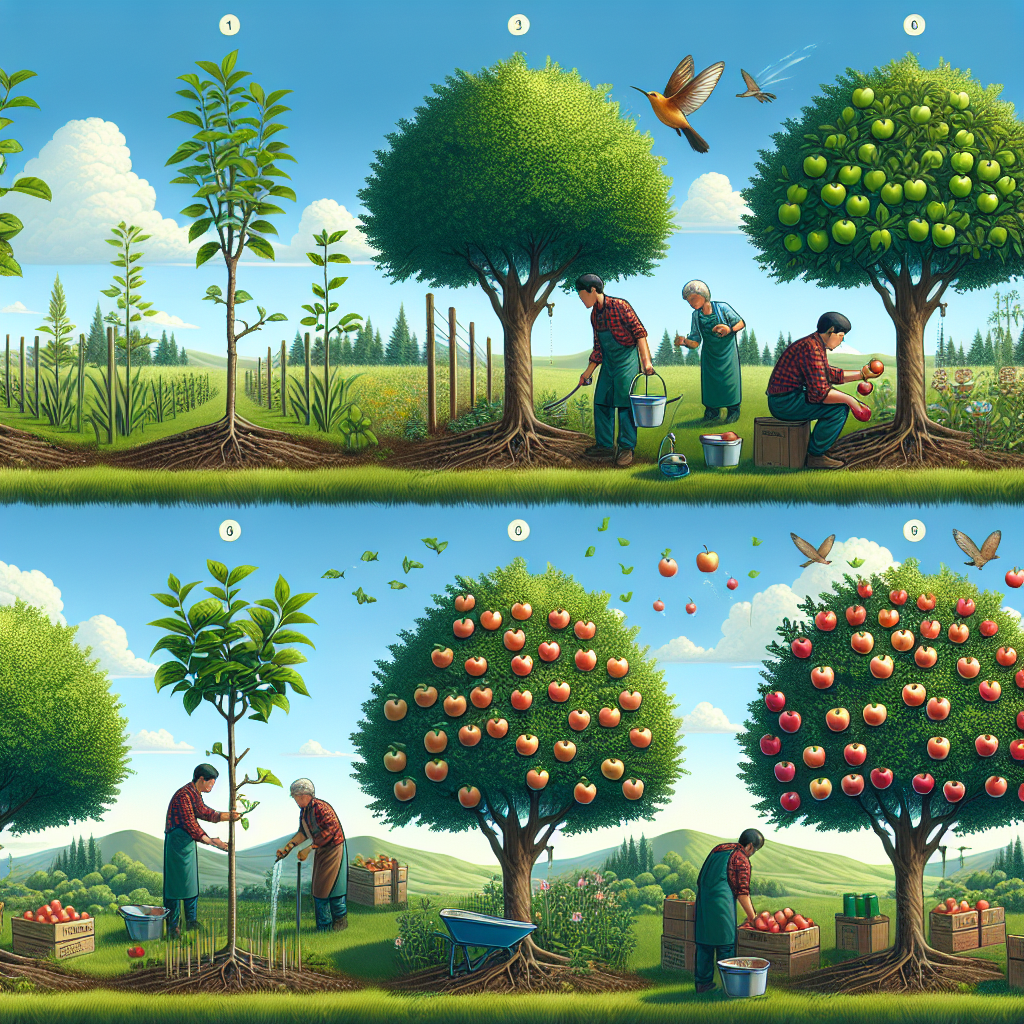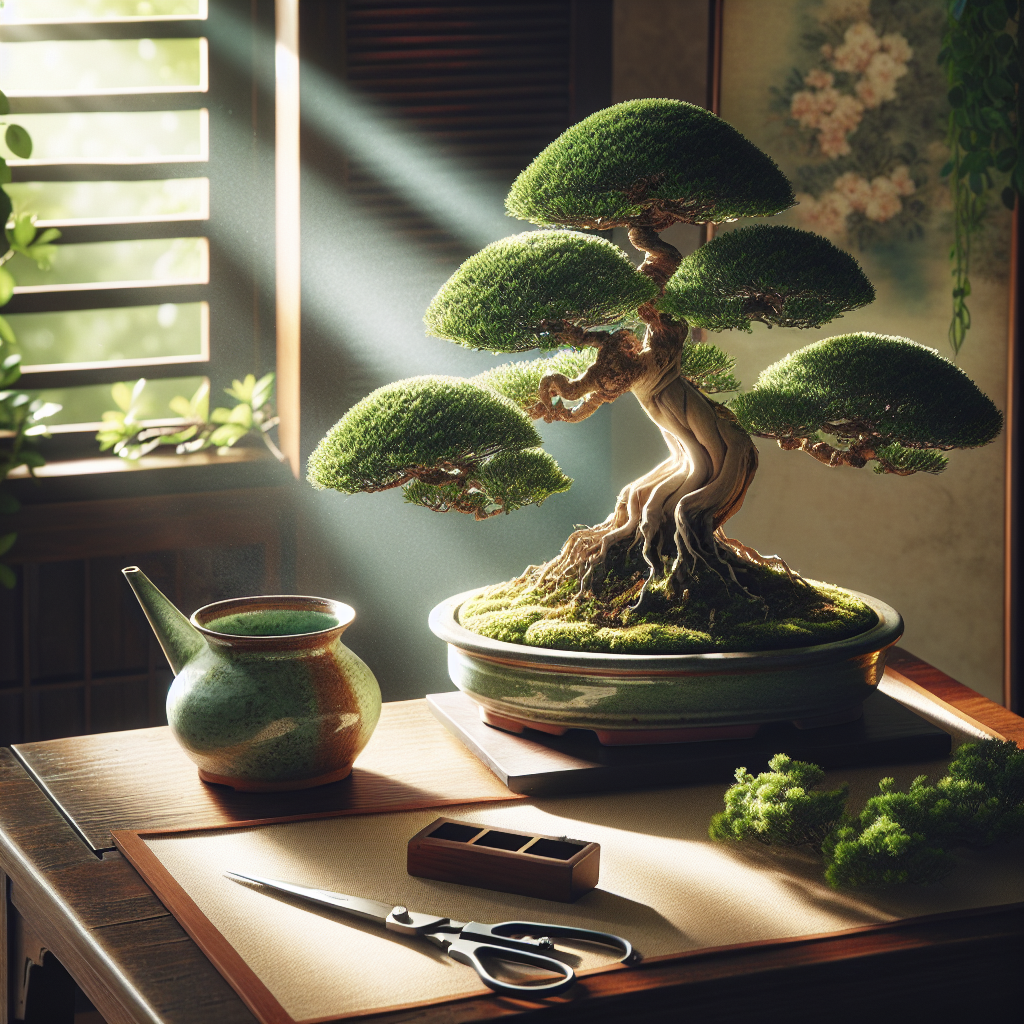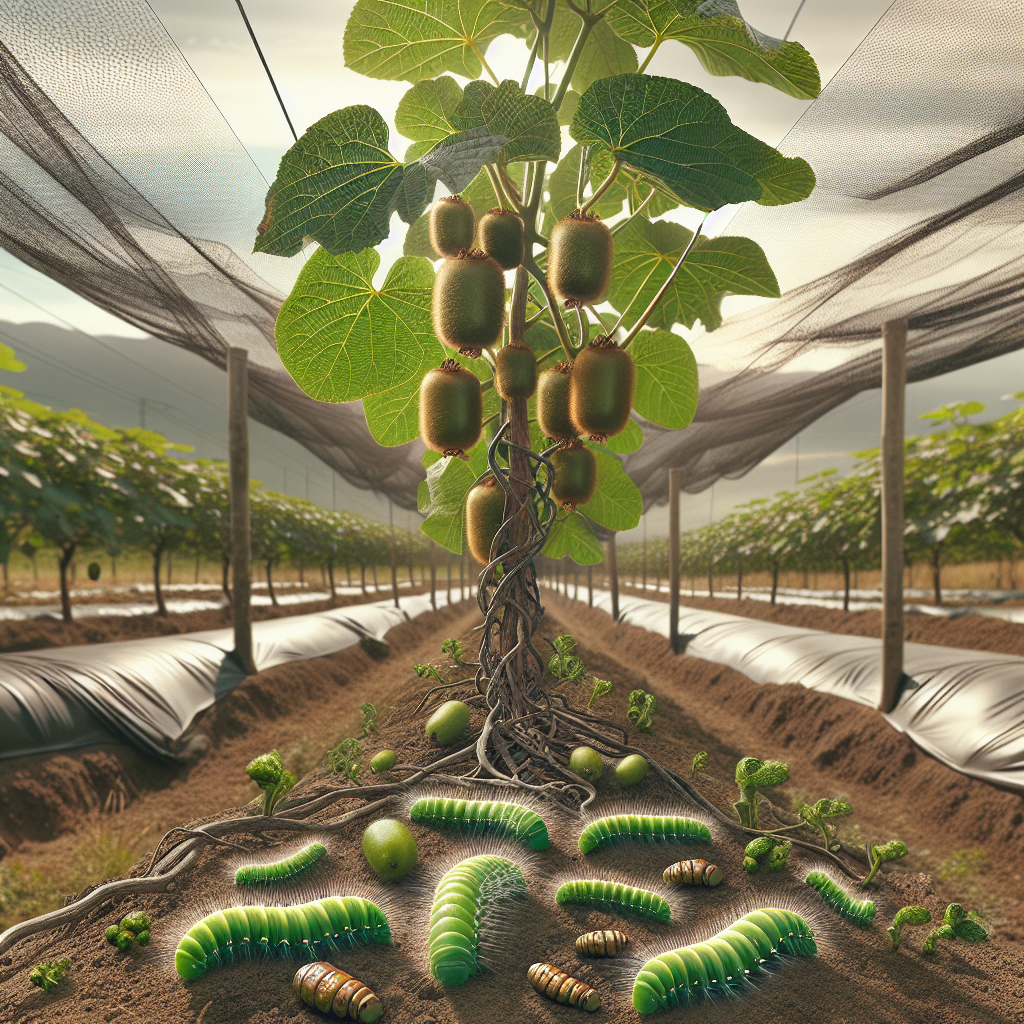Cultivating and Caring for Kei Apple Trees
Updated April 23, 2024 at 4:59 pm

Getting to Know Your Kei Apple
- Pet Friendly: Generally safe, but the thorns can be a hazard for pets. Always monitor your pets around the plants.
- Light Requirements: Full sunlight is essential for optimal growth and fruit production.
- Watering: Moderate watering needs, allow the soil to dry between watering sessions.
- Humidity: Tolerates a wide range of humidity levels, not particularly demanding.
- Temperature: Thrives in warm temperatures and is quite heat-tolerant.
- Difficulty: Moderate difficulty due to its specific pruning and care requirements for optimal yield.
Introduction to Kei Apple Tree Care
If you’re considering adding a fruitful and defensive hedge to your garden, the Kei Apple (Dovyalis caffra) is an excellent choice. Native to Southern Africa, this hardy plant not only bears tart, delicious fruits but also serves as a robust natural barrier thanks to its thorny branches. It could be just the multitasker you’re looking for.
Whether you aspire to create jams, jellies, or just enjoy a unique fruit, getting the Kei Apple tree to thrive in your garden involves some specialized knowledge. In this article, we’ll dive deep into all things Kei Apple, helping you understand its needs, prevent common issues, and ensure a bountiful harvest year after year.
Choosing the Right Planting Spot
As you contemplate planting Kei Apple trees, the first thing to consider is location, location, location. These sun-loving plants require areas that receive unfiltered, full sunlight for most of the day. This exposure is crucial for the photosynthesis that fuels their growth and fruit production.
When scouting for a spot, bear in mind that Kei Apple trees, with their thorny branches, can grow quite large. This means you’ll need to provide ample space not only for its canopy but also for root growth, which can be extensive and potentially disruptive if too close to building foundations or walkways.
Planting Your Kei Apple Tree
When you’ve found the perfect sunny spot, it’s time to plant. Spring is the ideal season for planting Kei Apples, as the soil warms up and the risk of frost has passed. You’ll want to dig a hole that’s twice as wide and just as deep as the root ball of your sapling, amending the soil with compost or well-rotted manure to give the tree a nutrient-rich start.
As you plant, be mindful of the tree’s mature size. Space them about 8-10 feet apart if you’re cultivating a hedge, or 12-15 feet apart for individual trees. Once planted, water the sapling thoroughly to settle the roots and help with shock from transplantation.
Irrigation and Moisture Management
Kei Apple trees need a moderate amount of water, especially when they’re young and establishing their roots. Aim for deep watering sessions that soak the soil to a depth of at least 2 feet, which encourages the roots to grow downwards and makes for a more resilient plant.
While they need consistent watering, it’s essential to allow the soil to dry out between waterings to avoid waterlogging, which can lead to root rot. An excellent way to check soil moisture is to insert your finger up to the second knuckle—if the soil feels dry, it’s time to water.
Feeding and Nutrition
Like any fruit-bearing plant, Kei Apples are hungry for nutrients. A balanced, slow-release fertilizer applied in the spring can promote healthy growth and abundant fruiting. Moreover, adding organic matter such as compost or aged manure around the base of the tree can improve soil fertility and structure, promoting health and vigor.
An ideal product that caters to the nutritional needs of fruit trees is the Jobe’s Organics Fruit & Citrus Fertilizer with Biozome. This OMRI listed product not only provides your Kei Apple with the essential nutrients but also improves long-term soil quality without the use of synthetic chemicals.
Find This and More on Amazon
Pest and Disease Control
Fortunately, Kei Apple trees are not overly susceptible to pests or diseases. However, it’s wise to perform routine checks for common issues such as aphids or fungal infections, which can occur when the tree is stressed or injured.
If you notice any unusual signs, such as leaf curling or spotting, consider using a neem oil-based product, like Bonide Neem Oil, as a natural remedy. Not only does it help manage pests, but it can also address fungal issues without resorting to harsh chemicals.
Find This and More on Amazon
Pruning and Maintenance
To ensure your Kei Apple tree remains healthy and productive, regular pruning is a must. This not only helps shape the plant but also improves air circulation, which can reduce the likelihood of pests and diseases. It’s advisable to prune during the dormant season, removing any dead, damaged, or crossing branches.
For creating a Kei Apple hedge, periodic trimming will be necessary to maintain the desired form. Be cautious, though; the thorns are not to be trifled with. Protective gardening gloves and long-sleeved shirts are recommended to prevent scratches and injuries.
Harvesting Kei Apples
The anticipation of the harvest season is what makes growing Kei Apples so exciting. When the fruits turn from green to a yellow-orange hue, you’ll know they’re ripe for picking. The best part? They usually ripen all at once, making for an abundant and satisfying harvest.
Because of their thorny protection, harvesting Kei Apples is a bit challenging. So, be sure to wear protective gear when picking the fruits to avoid the sharp thorns. Using garden scissors or a picker can also minimize the hazard of reaching into the branches.
Storing and Using Your Kei Apple Harvest
After the thrill of the harvest, figuring out what to do with your bounty is next. Kei Apples can be stored in the refrigerator for a few weeks, but why not get creative? They make excellent additions to jams, jellies, chutneys, or even as a tart complement to meats.
If you’re new to preserving fruits, the Ball FreshTECH Automatic Jam & Jelly Maker is a handy tool that simplifies the process. It stirs your ingredients while it cooks, and there are reviews saying that it’s a fantastic way to enjoy your homegrown Kei Apples all year round.
Find This and More on Amazon
The Aesthetic Appeal of Kei Apples
Aside from their practical uses, Kei Apple trees also have ornamental value. With their dense, green foliage and vibrant fruit, they make a visually appealing addition to any landscape. In spring, the tree is adorned with small, fragrant flowers, adding a splash of beauty to the garden.
The thorns may add a rugged touch, giving the plant a unique character. When used as a hedge, its thick growth provides privacy and an excellent windbreak, especially in coastal areas where other plants might falter.
Companion Planting and Biodiversity
While Kei Apples are quite self-sufficient, considering companion planting can enhance your garden’s biodiversity and create a more robust ecosystem. Plants like lavender and rosemary can attract beneficial insects, while tall grasses or shrubs might provide additional shelter to birds that could help in pest control.
Remember, a diverse garden is a healthy garden. By incorporating a variety of plant species, you not only promote a vibrant landscape but also support wildlife and beneficial organisms that contribute to the overall well-being of your gardening endeavors.
Understanding Soil Requirements
Kei Apples are adaptable to various soil types, but they thrive in well-drained soil. If you’re dealing with heavy clay, consider amending it with sand or organic material to improve drainage. A pH that’s slightly acidic to neutral is ideal for these trees.
Conducting a soil test can be very informative—it tells you what your soil may be lacking and helps you tailor your soil amendments precisely. If you’re unsure how to do it, a product like the Luster Leaf Rapitest Soil Test Kit has been said to be user-friendly and provides viable results to guide you in amending your soil correctly.
Timing and Technique for Propagation
If you’re interested in expanding your Kei Apple population, propagation by seeds or cuttings is an option. As soon as the fruit is ripe, you can collect the seeds and plant them or take semi-hardwood cuttings and root them in a mixture of soil and perlite.
For those who are looking to propagate by cuttings, using a rooting hormone can increase success rates. Products such as Hormex Rooting Hormone Powder are often recommended by reviewers for their effectiveness in promoting rapid root development.
Long-term Tree Health and Vigilance
Maintaining the health of your Kei Apple trees is an ongoing task. Keep an eye out for signs of stress or disease and address them promptly. Regularly replenishing mulch can help retain soil moisture and reduce temperature fluctuations that could stress the tree.
Also, don’t forget to inspect your tree after extreme weather events. If you live in an area where frosts are possible, providing protection with fleece wraps or moving potted specimens indoors can prevent damage and ensure your Kei Apples continue to thrive.
Community and Cultural Significance
Finally, the Kei Apple tree is more than just a plant—it’s a cultural symbol in its native land and now in gardens worldwide. Sharing cuttings, fruits, and gardening tips can foster community, and there’s a richness in connecting with fellow enthusiasts and learning from each other’s experiences.
Whether you’re swapping recipes for Kei Apple jelly or trading planting advice, these interactions can enrich your gardening journey and expand your network of garden-loving friends. And isn’t that part of the joy of horticulture—the sharing of bounty and knowledge?
Wrapping Up Kei Apple Tree Care
There you have it, all the knowledge you need to cultivate and care for Kei Apple trees. From choosing the right location to pruning, pest management, harvesting, and sharing, we’ve explored the many facets of this fascinating plant.
Remember, gardening is a journey of discovery and patience. As you nurture your Kei Apples, watch them grow and enjoy the fruits of your labor (quite literally), you’ll learn what works best for your unique environment and personal touch. So roll up your sleeves and dig in—your Kei Apple adventure awaits!
“`html
Conserving Water with Kei Apples
Water conservation is essential in gardening, especially in areas with limited rainfall. Kei Apple trees, once established, are drought tolerant, making them suitable for xeriscaping. This does not mean they don’t need water, but they can survive with less than many other fruit trees.
Employing drip irrigation or soaker hoses can significantly reduce water usage while ensuring that your trees receive the moisture they need. This method delivers water directly to the roots, minimizing evaporation and waste. So, it’s good for your plants and great for conserving a precious resource.
Understanding Pruning Techniques
Pruning is an art and a science, and mastering it can greatly benefit your Kei Apple trees. To avoid overcrowding and ensure sunlight penetrates the canopy, remove some of the inner branches. This will also increase air circulation, reducing the risk of fungal diseases.
It’s also important to cut just above a bud that is facing the direction you want new growth to take. This selective pruning will direct energy to the parts of the tree that you want to encourage. Remember, don’t remove more than one-third of the tree’s branches in a single season to avoid stressing the plant.
Promoting Pollination for Better Harvests
Kei Apples are dioecious, meaning you’ll need both male and female plants for pollination to occur and fruit to set. If you have only one tree and it isn’t fruiting, this could be why. You might need to plant additional trees to ensure cross-pollination and a bountiful harvest.
Attracting bees and other pollinators is also key. Planting pollinator-friendly flowers around your Kei Apple trees can bring the necessary helpers to your garden. If you notice a lack of pollinators, consider installing a bee house or leaving a small wildflower patch to attract more bees.
Protecting Your Trees from Frost
Although Kei Apples prefer warm temperatures, unexpected frost can occur. To protect young trees, you can use burlap wraps or frost cloths to cover the canopy during cold nights. As for established trees, they are hardy enough to handle light frost, but it’s still wise to keep an eye on the weather forecasts and be prepared.
If a severe frost is predicted, thoroughly water the soil a day before the frost is expected. Wet soil holds heat better than dry soil, providing some warmth around the roots. Remember, prevention is simpler than treatment when it comes to frost damage.
Adapting to Different Climates
While Kei Apples are well-suited to warmer climates, with some care, they can adapt to a range of environments. For those in cooler regions, growing Kei Apples in large pots may be a solution, as potted trees can be brought indoors or to a sheltered area during cold spells.
However, keep in mind that they will still need access to full sunlight, so placing them near a south-facing window or under grow lights during their indoor stay will ensure they don’t miss out on their light requirements.
Landscaping with Kei Apples
Kei Apples don’t just provide fruit; they can play a significant role in your landscape design. If you have a large property, planting a row of Kei Apple trees can offer an aesthetically pleasing and functional property boundary or wind barrier. Their thick foliage and thorny branches also act as a deterrent to unwanted visitors, both animal, and human.
For those with limited space, Kei Apple trees can be grown as standalone specimens or shaped into topiaries. Their versatility makes them an excellent choice for various garden themes, whether you’re going for a structured look or a more naturalistic setting.
Avoiding Common Gardener Mistakes
One common mistake gardeners make with Kei Apples is overwatering. Overzealous watering can lead to root rot, a condition that’s difficult to recover from. Make sure to stick to a watering schedule that allows the soil to dry between waterings, as we’ve discussed earlier.
Another mistake is neglecting to fertilize or prune regularly. Kei Apples need nutrition to produce fruit and pruning to maintain their health and shape. So don’t forget to feed your trees and wield those pruning shears with confidence!
Joining Kei Apple Enthusiast Communities
For additional support and inspiration, consider joining a community of fellow Kei Apple enthusiasts. Online forums and local gardening clubs can be great resources for tips tailored to your region’s growing conditions.
Sharing experiences with other growers can provide you with new insights to apply to your own garden. Don’t underestimate the power of community knowledge when it comes to specialized plants like the Kei Apple.
Final Thoughts on Kei Apple Cultivation
Caring for Kei Apple trees is a rewarding endeavor that offers both practical benefits and aesthetic pleasure. From their robust defensive properties to their delectable fruits, these trees are a valuable addition to any garden equipped to meet their needs.
Remember, every plant has its own set of requirements, and the Kei Apple is no exception. With a bit of dedication and careful attention to their care, you can enjoy not just their fruits but also the beauty and protection these trees provide. So follow the guidance we’ve provided, and you’ll be well on your way to becoming a Kei Apple aficionado.
“`
Shop more on Amazon


